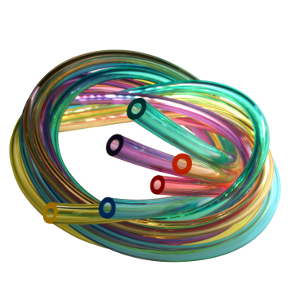08 8162 5544
Call us today for the best waste and recycling rates in Adelaide

Industrial Plastic Recycling in South Australia
Plastic is a versatile and durable substance which is widely taken for granted. There are several different kinds of plastics, all with various applications. Since they are light, durable, mouldable, hygienic and inexpensive to produce, plastics have become a common sight in our every day lives. What isn't so common is what they are made out of: fossil fuels. As non-renewable resources, we need to be very careful of how we use fossil fuels and not recycling plastics is a terrible waste of a limited resource.
The Plastics and Chemicals Industries Association (PACIA) recently released an independently produced report regarding the recycling rates and trends in Australia. The report found that plastic recycling rates are on the rise in Australia. Take plastic packaging recycling for example, in 2010-2011, the recycling rate was 37.5%, up from 34.8% in the previous year. Another trend found in this report was that plastic recycling is increasingly being outsourced. In the year 2000, 74% of the plastic that got recycled was recycled in Australia while the remainder was shipped overseas for recycling treatment. A decade later, that rate had dropped to just over 50% of plastics being reprocessed in Australia.
The overall plastics recycling rate for the country was at 20.1% in 2010-2011, since a total of 1,433,046 tonnes of plastic had been consumed in Australia and only 287,360 tonnes were recycled. This percentage might seem pretty low, especially compared to other resources such as cardboard, glass and metal. One of the reasons for this is that businesses and residents alike often become confused about the type of plastic that can be recycled. Since there are many different kinds of plastic, it can be a tedious task to determine what is recyclable and what isn't. Technically speaking, most plastics can be reprocessed into another product, however, often a recycling facility won't be available in certain regions, further complicating things for businesses and consumers.
To help solve this problem, Zero Waste South Australia has come up with a quick guide outlining what plastics should be put in the waste bin versus the recycle bin in SA. Plastics are almost always stamped with a coded label which will indicate whether it can be recycled or not. The label is a triangular recycling symbol with a number from 1 through 7 on the inside. Each of these numbers represents a different kind of plastic. For example, a 1 represents polyethylene terephthalate, a 2 represents high density polyethylene, and so on. A good rule of thumb for South Australians is to remember that numbers 1 through 6 are all recyclable. Anything labeled with a 7 or the letters EPS (which is expanded polystyrene, commonly used as packing material) should go in the waste bin.
Thankfully, for many types of businesses across South Australia, there are a limited number of plastics that are used in operations and so less research is required to sort recyclable content and waste. For example, in the automotive industry, polypropylene plastic is used to form the battery case and bumper bars. The construction and agricultural industries often uses polyethylene plastic as packaging material for new supplies. The mining industry often uses plastic pipes throughout their sites. All of these materials are recyclable, however, it is often considered uneconomical to have this rubbish removed and trucked to a recycling facility to be recycled.
Another reason why plastic recycling is so low among industries in SA and around Australia is the characteristics of the plastic in question. There are two overarching types of plastics: thermoplastics and thermosets. Thermoplastics can be continuously softened and hardened from product to product while thermosets, once produced, can never be recycled into another material. The need for thermosets, as packaging material, food insulators and many other application, must go to a general waste bin and finally to a landfill. This causes the recycling rate to be unalterably lower than for other materials.
The Australian government, in conjunction with the packaging industry, have developed the Australian Packing Covenant to solve this exact problem. The goal of the covenant is to reduce the amount of rubbish that is produced by designing more sustainable and resource efficient packaging material, thereby allowing the recycling rate to increase and reduce the amount of waste collected and sent to a landfill. Rather than seeing plastic thermosets, or packing 'peanuts', we may soon see other materials such as post-consumer shredded cardboard and paper as packing material for example.
The tireless efforts of every level of government across the country and industries of every kind to find new creative ways to reduce their generation of waste is truly exciting. With the demonstrated trends of increased recycling rates, the growth of the recycling industry and initiatives to reduce the production of goods that will only end up in a landfill, we are boldly moving towards a more sustainable world.




